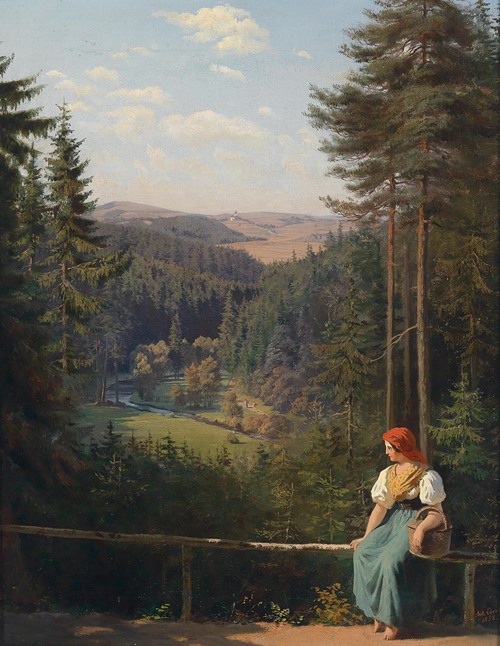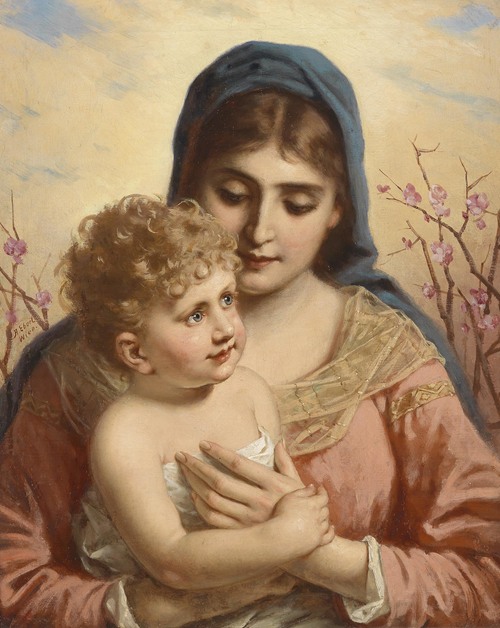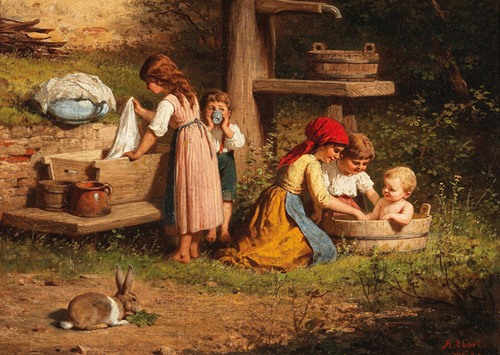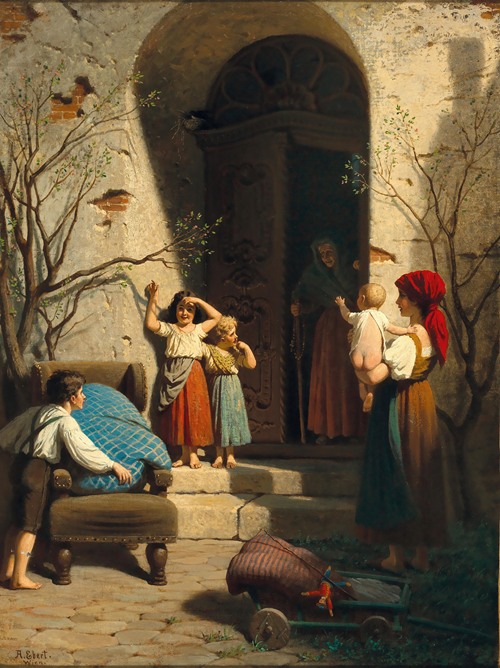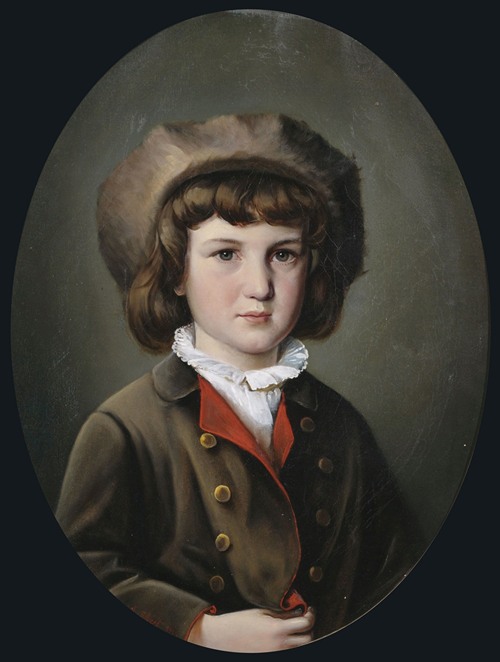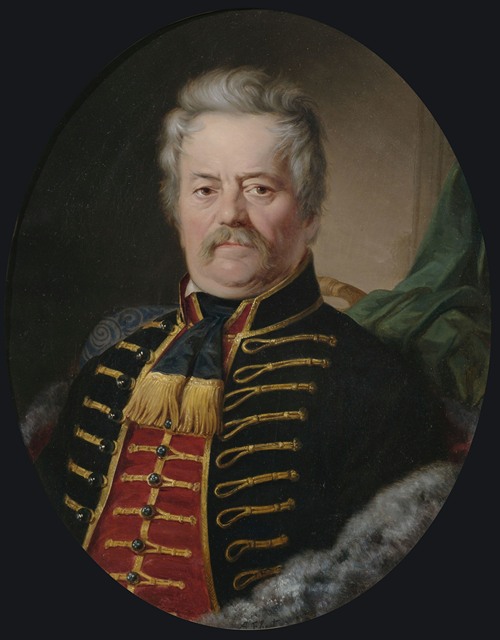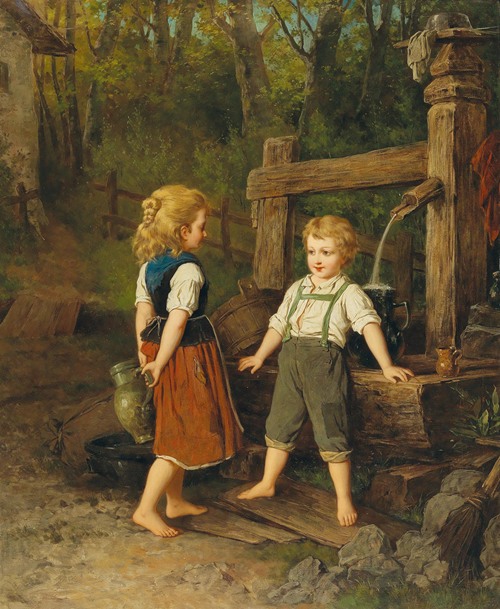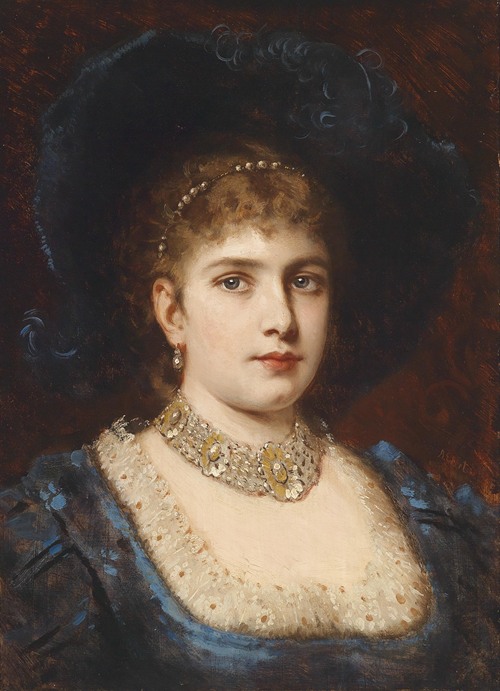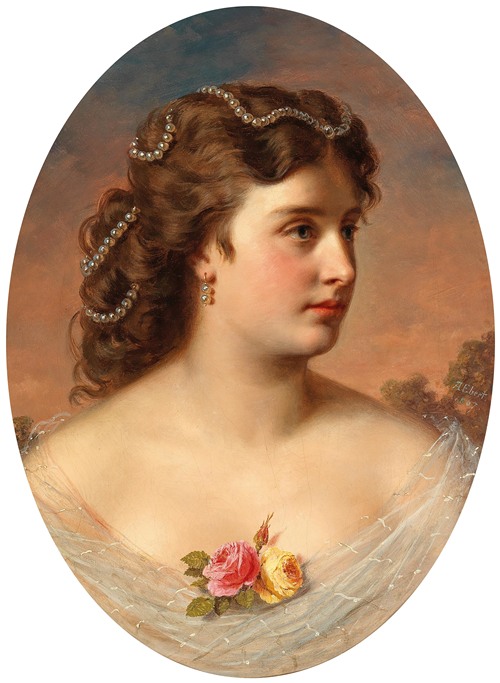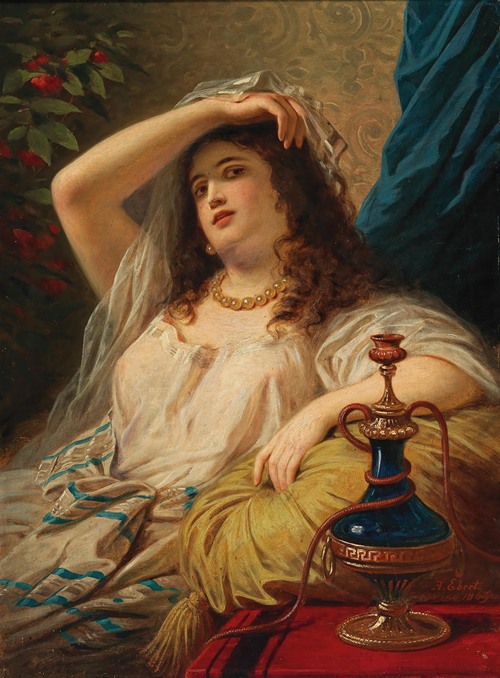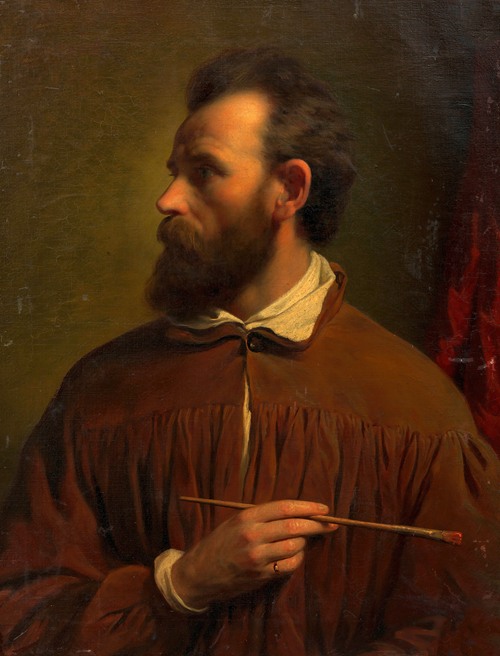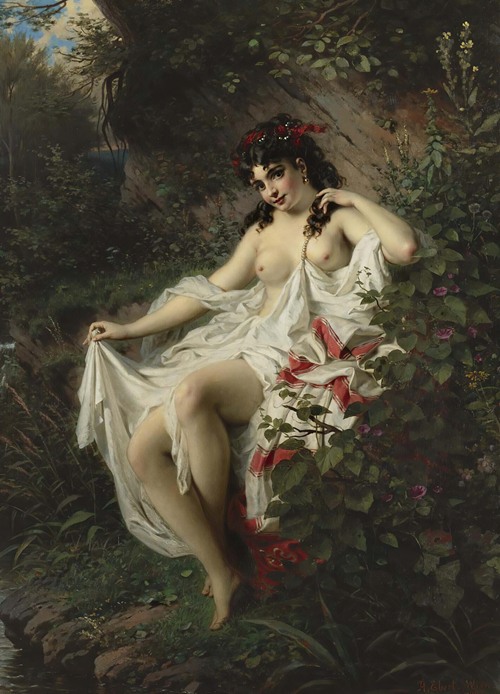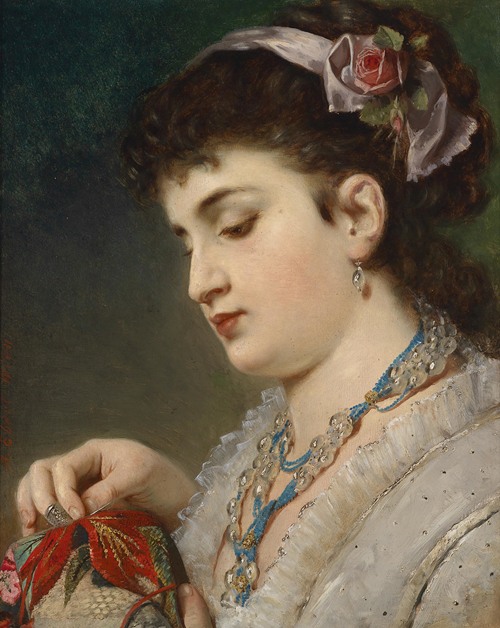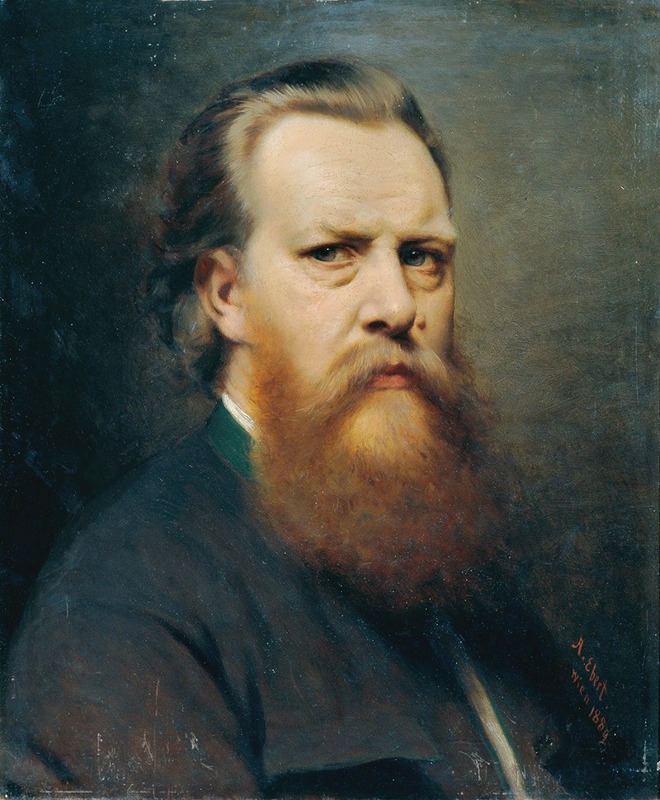
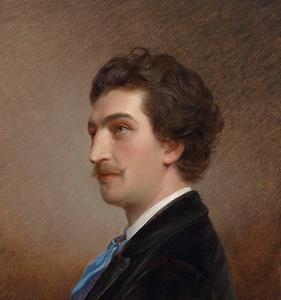
As an artist, Anton Ebert was particularly skilled in painting the human figure, especially children and young women and in this delightful scene combines his talent as a portraitist, a genre painter and landscape artist. Ebert was born on 6th June 1845 at Kladrau Castle near Mies, Bavaria, home of the noble Windisch-Graetz family, where Anton spent much of his youth as the son of the royal treasurer at Klandrau. Like his elder brother Ludwig (b. 1834), who was also born at Kladrau and went on to make his name as concertmaster to the Grand Duke in Vienna and as first cellist of the Gurzenich Orchestra in Cologne, Anton was born with a strong artistic talent. In recognition of this, he was sent to the Prague Akademie and from there to Vienna, where he studied under the Austrian Romantic painter Ferdinand Georg Waldmüller (1793-1865), whose wide repertoire of subjects included genre scenes, often of young children and their mothers, portraits, landscapes and a few Orientalist scenes. Waldmüller's academic style, his fresh palette as well as his subject matter were all to exert a strong influence on Anton, who throughout his relatively short career painted in a similar traditional manner.
Like Waldmüller, Ebert tended to paint portraits, which provided a staple income as well as genre scenes and a few Orientalist beauties. Ebert enjoyed a thriving portrait practise whose sitters included royalty, aristocracy and society figures. Among them was the American born soprano singer Minnie Hauck (exhibited at the Vienna Künstlerhaus). He also painted a portrait of Sissi-Elizabeth of Wittlesbach, as the young wife of the Emperor Franz Josef I as well as one of Prince Windisch-Graetz, governor of Mainz, whose portrait is now in the Mainz Art Gallery. Added to this Ebert also painted a number of self-portraits including one of 1892, which he gave to the Kaiser's own collection and is now in the Museum of Vienna.
Many of Ebert's genre scenes, especially those of young children were drawn from memories of his own childhood at Kladrau Castle and from contemporary scenes of Windisch-Graetz family as they grew up. The present painting is a case in point since it appears that the setting was taken from the grounds of Kladrau Castle, while the children are almost certainly the seven offspring of Alfred III of Windisch-Graetz (1851-1927). On the death of his father Alfred II (1819-76), Alfred III became head of the Windisch-Graetz House; he married Princess Gabriele von Auersperg in 1877, by whom he had seven children. Accepting that on stylistic grounds the present work dates to the 1890's it follows that the three young sisters in the foreground are Maria Hedwig (b. 1878), Christiane Maria (b. 1881) and Agnes Mathilde (b. 1884). They are accompanied by their young brother Vincenz Alfred (b. 1882); whilst in the background playing on a sleigh is another son Alfred and his two youngest sisters Wilhelmine and Maria-Aglaë. It is also probable that the young chestnut seller was modelled on one of the young forester boys whose fathers, grandfathers and beyond had been employed by the Windisch-Graetz family for many generations.
Ebert's ties with Kladrau continued throughout his life and it was probably through the Windisch-Graetz family that he was commissioned to paint an altarpiece for St Peters Church at Kladrau. During the latter part of his life Ebert also painted a number of landscapes predominantly showing scenes around Vienna where he was then living and where he died on 16th June 1896, just before his 51st birthday. It was also in Vienna that he exhibited at its Künstlerhaus as well as at other venues between 1868 and 1888. In addition to those museums mentioned above, Ebert's oeuvre is represented at the Roumianzeff Museum, Moscow with a scene of a mother and her children, and at Stettin Nationalmuseum with a scene entitled "At the Fountain" of 1878.
